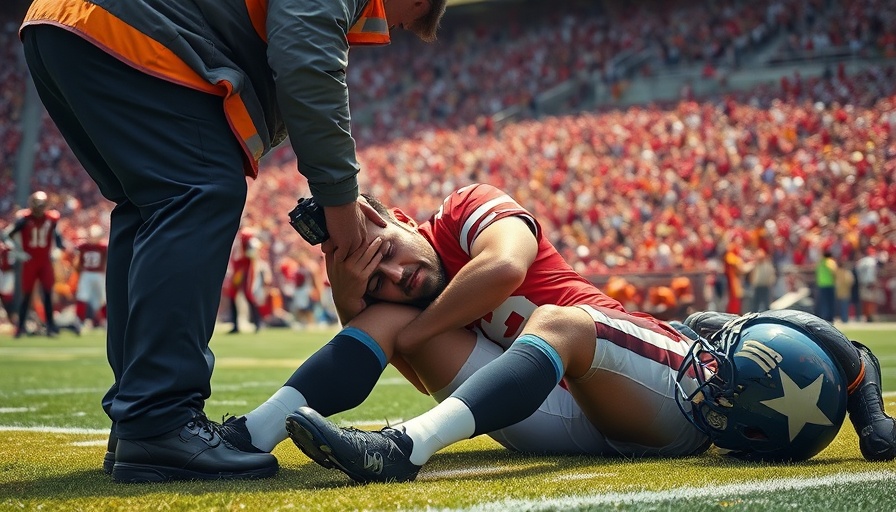
Understanding Turf Toe: More Than Just a Football Injury
When Cincinnati Bengals quarterback Joe Burrow was diagnosed with turf toe, it raised eyebrows and questions about this uncommon injury. But what exactly is turf toe, and why is it such a big deal, especially for athletes? Turftoe is a sprain of the big toe joint, specifically affecting the ligaments at the base of the toe. This injury typically occurs when the toe is forcibly bent upward, which is a common motion in sports like football that requires sudden stops and directional changes.
The Mechanics of Turf Toe: How It Happens
Turf toe occurs most frequently in conditions that involve artificial turf, where the surface is hard and less forgiving than natural grass. The impact can lead to a range of mobility-related complications that are concerning, not just for high-performance athletes like Burrow, but also for everyday people engaging in physical activities. Even a minor version of this sprain can sideline someone, as it often limits their ability to push off with the foot properly. This can lead to a compensatory change in walking or running patterns, which could cause additional injuries over time.
Why It's a Concern for Seniors: Age and Injury
For seniors, understanding turf toe and its implications is especially important. While it might seem like a young man's injury, age can complicate any sprain or strain. As we get older, our ligaments can become less elastic and more susceptible to injury. The recovery from turf toe may take longer compared to younger individuals, making prevention and early intervention crucial. Additionally, maintaining balance and stability is a delicate dance, and turf toe can disrupt this significantly, leading to falls or further complications.
Recognizing the Symptoms
So, how can one recognize turf toe? Typical symptoms include swelling, bruising, pain on movement, and stiffness in the big toe. It's essential to pay attention to these signs, as neglecting them can shift a simple injury into a chronic issue. For seniors or anyone living an active lifestyle, timely treatment can mean the difference between a short rehab period and months of recovery.
Prevention Tips: Staying Active Safely
To avoid turf toe, especially for those engaging in sports or physical activities, adopting preventive strategies is key. Here are some tips:
- Choose the Right Footwear: Wearing shoes with good arch support and cushioning can alleviate unnecessary pressure on the toes.
- Warm Up Properly: Ensuring your body is warmed up and limber before engaging in strenuous activity can help prevent injuries.
- Enhance Toe Flexibility: Simple toe-stretching exercises can strengthen toe ligaments and improve flexibility.
Rehabilitation and Recovery
For those who do suffer turf toe, the recovery process can be daunting. It typically involves resting the toe, applying ice, and sometimes using crutches or a special boot. Over-the-counter pain relievers can help, but it’s always best to consult a healthcare provider for tailored advice. In some cases, physical therapy might be recommended to regain full function of the toe.
Final Thoughts: A Reminder to Prioritize Care
Turf toe may sound trivial, but understanding its implications can lead to better health outcomes for seniors and athletes alike. Whether you’re actively engaged in sports or simply taking daily walks, paying attention to your body and addressing issues promptly can safeguard your health. As we’ve learned from athletes like Joe Burrow, even minor injuries can have serious repercussions, highlighting the importance of injury awareness and prevention.
Investing in your health means staying informed, active, and mindful of how your body functions. Remember, a proactive approach to your well-being can help you keep moving—whether on the field or in your daily life.
 Add Row
Add Row  Add
Add 



Write A Comment